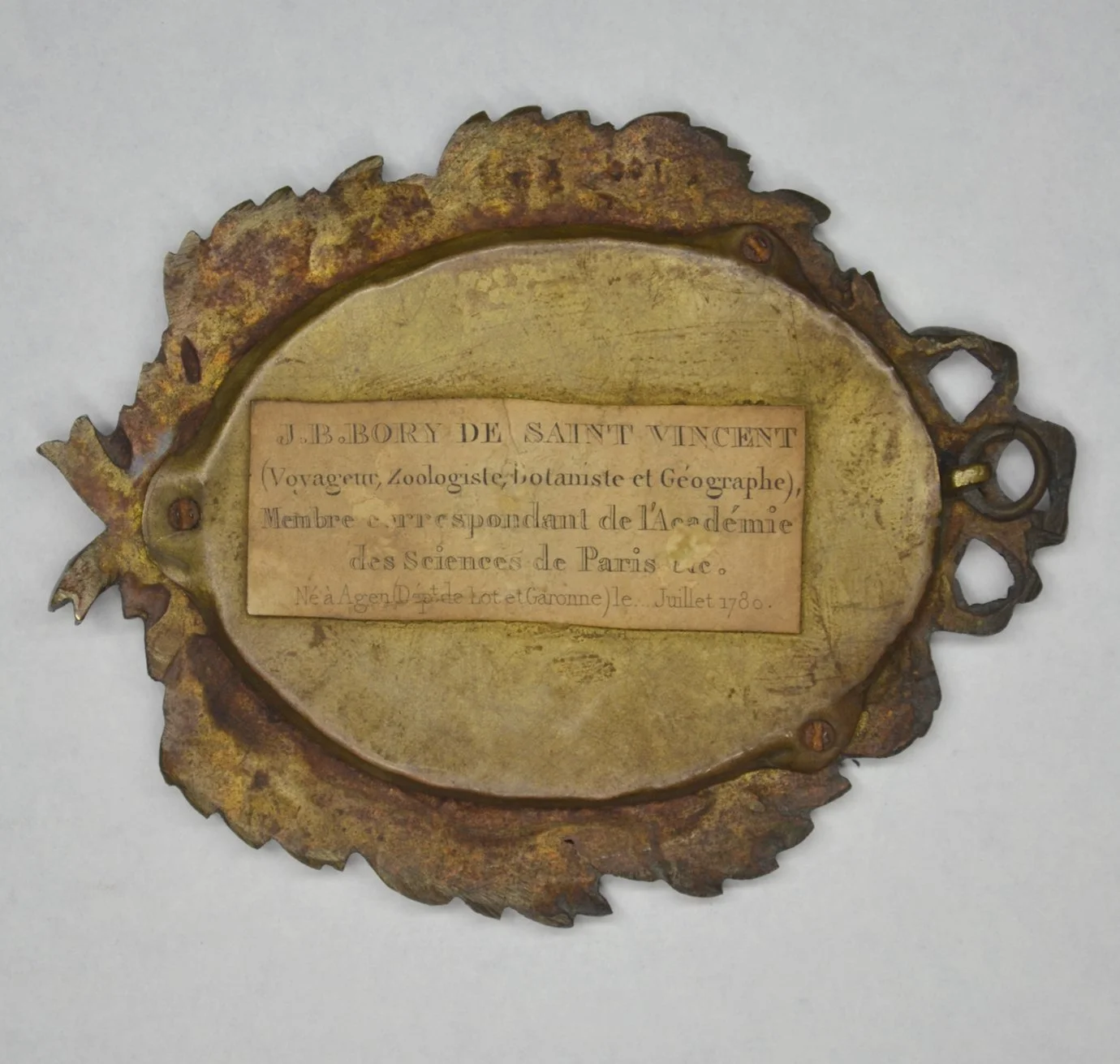[BAUDIN] [TARDIEU, Ambroise]. Portrait of J.B. Bory de Saint Vincent.
[BAUDIN] [TARDIEU, Ambroise]. Portrait of J.B. Bory de Saint Vincent.
Published: publishing details cropped, but known to be dated 1826.
Description: hand-coloured engraved portrait miniature in original oval-shaped bronze frame.
Condition: exhibiting some damage (see photos), the portrait marked, the frame with a heavy patina of wear.
Baudin’s blue-eyed boy: the only known hand-coloured example?
A remarkable survivor: this small portrait of one of the scientists of the Baudin voyage has more than its fair share of knocks and wear (not least a mark on the sitter’s cheek that gives him an uncanny resemblance to Frankenstein’s monster), but is nonetheless a strictly contemporary keepsake with original – now faded – handcolouring.
Issued around 1826, this is the earliest of two known published portraits of Bory de Saint Vincent, both by the well-known engraver Ambroise Tardieu (the second, with the scientist sporting a remarkably unflattering moustache, was published in 1836). It goes without saying that portraits of any of the veterans of the Baudin voyage are very uncommon.
Jean Baptiste Bory de Saint-Vincent (1778-1846) was appointed to the Baudin voyage as a young 22-year-old scientist, but detested the commander, and was one of those who jumped ship in Mauritius. Despite this early departure, he was also the first person to publish any account of the expedition, issuing his Voyage dans les quatres principales iles des mers d’Afrique as soon as 1804, almost before the final ship had returned to France. The work was a lavish production, and although it initially gained a certain notoriety for the author’s undisguised contempt for Baudin, it is now recognised as a genuine contribution to the scientific impulse of the original planners of the voyage, and a work of great import for the Indian Ocean generally.
Whatever else he was an accomplished scientist, described by Frank Horner as combining “the burning curiosity, love of action, and catholic breadth of scientific interest that seem to have characterized many of the young French naturalists at this time…” (The French Reconnaissance, p. 75). In his later life he joined Napoleon’s Army and served at the battle of Austerlitz, and became an exile under the Bourbons, but was able to make a quiet return to Paris and his scientific studies in later life. He published widely, including being editor of the magisterial Dictionnaire classique d’histoire naturelle (1822).
Tardieu executed a long series of portraits of prominent scientists in the 1820s, issuing portraits of figures like Sir Joseph Banks, Alessandro Volta, André Marie Ampère, and even another Baudin veteran, François Péron. Copies of the Bory de Saint Vincent portrait engraving are known in some of the likely collections (BnF, Wellcome, NLA, etc.) but none, to the best of my knowledge, are known in this curious original bronze frame and, more importantly, none appear to have been hand-coloured.
The original caption has been pasted to the verso, reading: “J.B Bory de Saint Vincent (Voyageur, Zoologiste, Botaniste et Géographe), Membre correspondant de l’Académie des Sciences de Paris &c. Né à Agen (Dépt. de Lot et Garonne) le … Juillet 1780.” As an aside, it’s not clear why the engraving gives the wrong date of birth – Bory de Saint Vincent was actually born in 1778.
References: BnF (Gallica); Wellcome Library; Worldcat.


